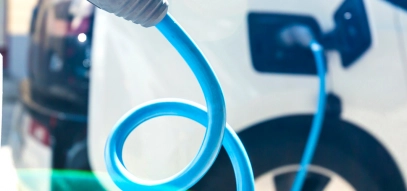
Automotive suppliers face Green Taxonomy choices
For automotive suppliers, the objective is to measure the share of eligible activities contributing to the first two climate objectives: mitigation of climate change and adaptation to climate change.
Following our analysis of the first publications relating to the three eligibility ratios of the EU’s nine major sector players subject to this new regulation, overall results are heterogeneous, reflecting variable interpretations of the regulations and the specificities of each equipment manufacturer.
Two stand-out approaches
Beyond the specificities according to the activities of equipment suppliers, two methodological approaches stand out. First, a “destination” approach where the components are inseparable from the vehicles they equip and whose production is thus attached to the activity of “Low-carbon manufacturing technology for transport”. This approach is based, in particular, on the leading position taken by the European Association of Automotive Suppliers (CLEPA).
Secondly is the “component” approach, followed by 67% of issuers in the panel and, in particular, by all tyre suppliers. This approach considers that the production of components must be associated with the activity of “Other low-carbon manufacturing technologies”.
The Michelin and Pirelli groups have demonstrated the substantial contribution of tyres according to the rolling resistance classes and the European labelling that standardises these characteristics. Only the Plastic Omnium group considered that the eligible operating expenses were not significant enough.
In addition, 33% of issuers in the panel have already applied the substantial contribution criteria for the assessment of eligibility, which considers only sales of equipment intended for electric or plug-in hybrid vehicles. Plus, 40% of issuers have published ratios broken down by taxonomic activity.
Applying best practices
Notably, 44% of issuers include elements of the Taxonomy in other key communication chapters, such as business model and risk factors. Also, 33% of issuers warn of the impact of alignment criteria on ratios as of the next financial year.
In terms of overall findings, two players in the panel publish voluntary ratios. Pirelli presented two sets of voluntary ratios based on the European tyre resistance quality label representing high and very high quality. Valeo published the share of sales contributing to reducing CO2 emissions and improving road safety. In 2021, 62% of products sold contributed to the reduction of CO2 emissions.
Regarding methodology development good practices, Schaeffler and Leoni had one of their statutory auditors audit the three ratios according to a moderate level of assurance.
Multiple challenges loom for equipment suppliers
For the 2022 financial year, those automotive equipment suppliers who have opted for the component approach must demonstrate compliance with Do No Significant Harm (DNSH) and Minimum Safeguards for their operational activities. In particular, concerning climate change mitigation according to EU criteria.
Those who have chosen the destination approach need to demonstrate the same criteria except those relating to climate change mitigation. This analysis can only be carried out at the company’s terminals, and compliance with the technical examination criteria is conditional on the type of final vehicles equipped.
The choice of an appropriate approach will have to be transparent in terms of communication and caution. If the manufacturers consider that vehicles are not aligned because they do not comply with certain DNSHs, this could lead to discrepancies in the results.





